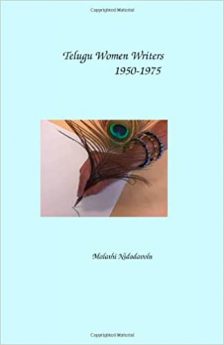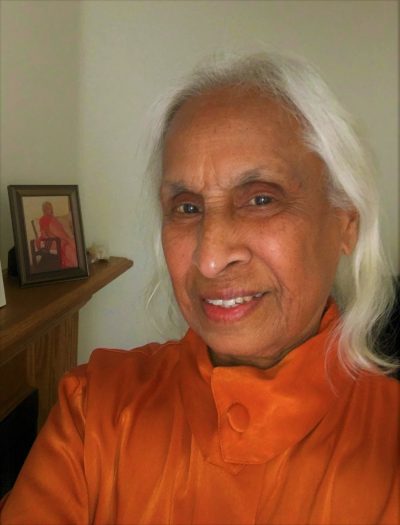Telugu Women writers-9
-Nidadvolu Malathi
Magazine Editors and Circulation Numbers
During my interviews with women writers, several of them mentioned that the magazine editors encouraged them. The names included Narla Venkateswara Rao, Gora Sastry, Khasa Subba Rao, and Puranam Subrahmanya Sarma. Other weekly and monthly magazines like Sahiti, Swati, Yuva, Tharuna, and Jayasri also were publishing fiction by women writers extensively. In this regard, a comment made by Ranganayakamma is noteworthy. She commented that, in the early years of her writing, the magazine editors were publishing anything she had sent in. In my recent trip to Andhra Pradesh, I spoke with a few writers, Turaga Janakirani, D. Kameswari, and P. Satyavati for instance, and they all stated that their stories were never rejected, and had never been edited. Kameswari said that her stories were almost never rejected; and if one magazine returned her story, she sent it to another magazine and got it published.
After talking with several writers and from my own experience, I concluded that the magazine editors were less critical of the stories and more inclined to welcome women’s writing during this period.
By early sixties, some of the women writers reached a status that had a substantial impact on magazine circulations. Magazine editors started to accommodate the demands of women writers zealously. They were willing to accommodate the terms of top ranking women writers such as Sulochana Rani, Kausalyadevi, Ranganayakamma, and Lata, and willing to pay higher remuneration, sometimes twice as much as male writers, accept incomplete works, publish without editorial intervention. They were willing to sign contracts without receiving an outline! The trend seemed to have continued into the eighties. In December 1982, I picked up a couple of monthly catalogs of commercial publishers, in which I found the ratio of fiction by female writers to that of male writers to be staggering. In one instance, the ratio was 120 to 6! In January 1983, two editors of highly circulated weekly magazines, Andhra Jyoti Weekly (with a circulation of 100,000) and Andhraprabha Weekly (with a circulation of 80,000) expressed the view that, in sheer numbers, the women writers outnumbered the male writers, and that the names of women writers were a contributory factor in increasing their circulation figures. In 1977, Subrahmanya Sarma stated that the weekly and monthly magazines were publishing 200 novels and 1500 short stories a month on average, and that the unpublished fiction would be ten times as many. He also stated, “Our magazines contributed immensely to promoting colloquial Telugu. We are living in an age of mediocracy. Only the mediocre writing is receiving awards and honors. Nonetheless, our writers have brought us remarkable readership,” and, “Only educated women in our families picked up the pen and accomplished so much. Imagine how great the novel is going to be when every one from all classes in our society starts writing.”
Commercial Publishers
Soon enough, commercial publishers noticed the marketability of fiction by women writers. First, the companies were publishing only the novels serialized in popular magazines. Later they started publishing “direct novels”, meaning first time publication. Both types of novels brought enormous name and fame to the women writers and money for the publishers. Following the magazine trends, the commercial publishers were also accommodating the demands of women writers.
- Kameswari recounted an interesting story about her first novel, Kottaneeru [Fresh Waters], and how she came to write it. In 1968, Kameswari was searching for a publisher to publish an anthology of her short stories. K. Ramalakshmi introduced her to M. N. Rao, publisher of EMESCO books. At the time, EMESCO was one of the foremost publishers of popular fiction. M. N. Rao told Kameswari that anthologies were not selling well, and asked her to give him a novel. Then Ramalakshmi advised Kameswari to write a novel to humor the publisher and include her anthology in the negotiations. Thus, Kameswari wrote her first novel. She continued to write novels and use them as bargaining chips to publish her anthologies in the next few years, she added!
In those days, big name publishers like Navodaya Publishers, Visalandhra Publishing House, Desi Kavita Mandali and M. Seshachalam & Company (an affiliate of EMESCO) published mostly fiction by women writers. Lata published her works on her own under the banner, Vamsi Publications. Ranganayakamma published her books first under the banner, M.S.R. publications, and later under Sweet Home Publications. In general, writers mostly relied on commercial publishers.
*****
(Contd..)



చాలా కొత్త విషయాలను తెలుసుకున్నాను.
ముఖ్యంగా నిడదవోలు మాలతి గారు 1950 నుంచే వ్రాయడం మొదలుపెట్టారని, ఇంత అనుభవజ్ఞురాలి ని సోషల్ మీడియా ద్వారా అనుసరించే అవకాశాన్నిచ్చిన ముఖపుస్తక సృష్టికర్త జుకర్ బాబు కు ధన్యవాదాలు తెలుపుకుంటున్నాను🙏🙏🙏
నాకు కూడా మీపరిచయం ఆనందదాయకం. మీఆప్తవాక్కుకు ధన్యవాదాలు.